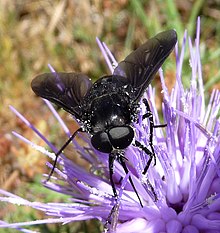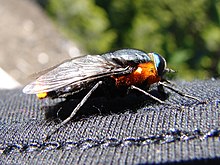Esenbeckia is a genus of neotropical horse flies in the family Tabanidae.
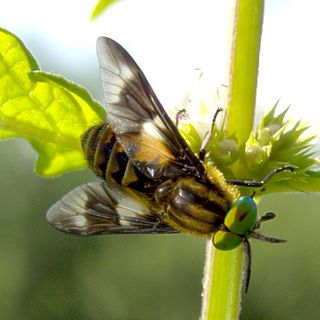
Superfamily Tabanoidea are insects in the order Diptera.

Scaptia is a genus of horse-fly in the tribe Scionini.
Dasychela is a genus of biting horseflies of the family Tabanidae. There are 8 species with a neotropical distribution, with one—D. badia—found in Central America.
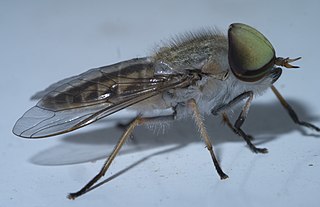
Tabaninae is a subfamily in the family Tabanidae commonly known as horse flies. There are more than 3000 described species in Tabaninae.

Diachlorini is a tribe of horse flies in the family Tabanidae.

Chrysopsinae is an insect subfamily in the family Tabanidae commonly known as deer flies or sheep flies and are bloodsucking insects considered pests to humans and cattle. They are large flies with large brightly-coloured compound eyes, and large clear wings with dark bands. They are larger than the common housefly and smaller than the horse-fly.
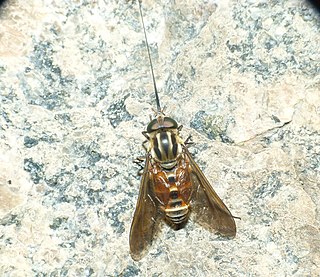
Philoliche is a genus of long-tongued Horse-flies found in the Old World. It appears to be the sole member of tribe Philolichini.

Scionini is a tribe of horse and deer flies in subfamily Pangoniinae of family Tabanidae.
Copidapha is a genus of flies in the family Tabanidae.
Scione is a genus of flies in the family Tabanidae.
Fidena is a genus of horse-fly in the tribe Scionini.

Chrysopsini is a tribe of horse and deer flies in the family Tabanidae.

Dasybasis is a genus of horse flies in the family Tabanidae.
Catachlorops is a genus of horse flies in the family Tabanidae.
Bouvieromyiini is a tribe of horse flies in the family Tabanidae.
Rhigioglossa is a genus of horse flies in the family Tabanidae.
Myioscaptia is a genus of horse flies in the family Tabanidae.
